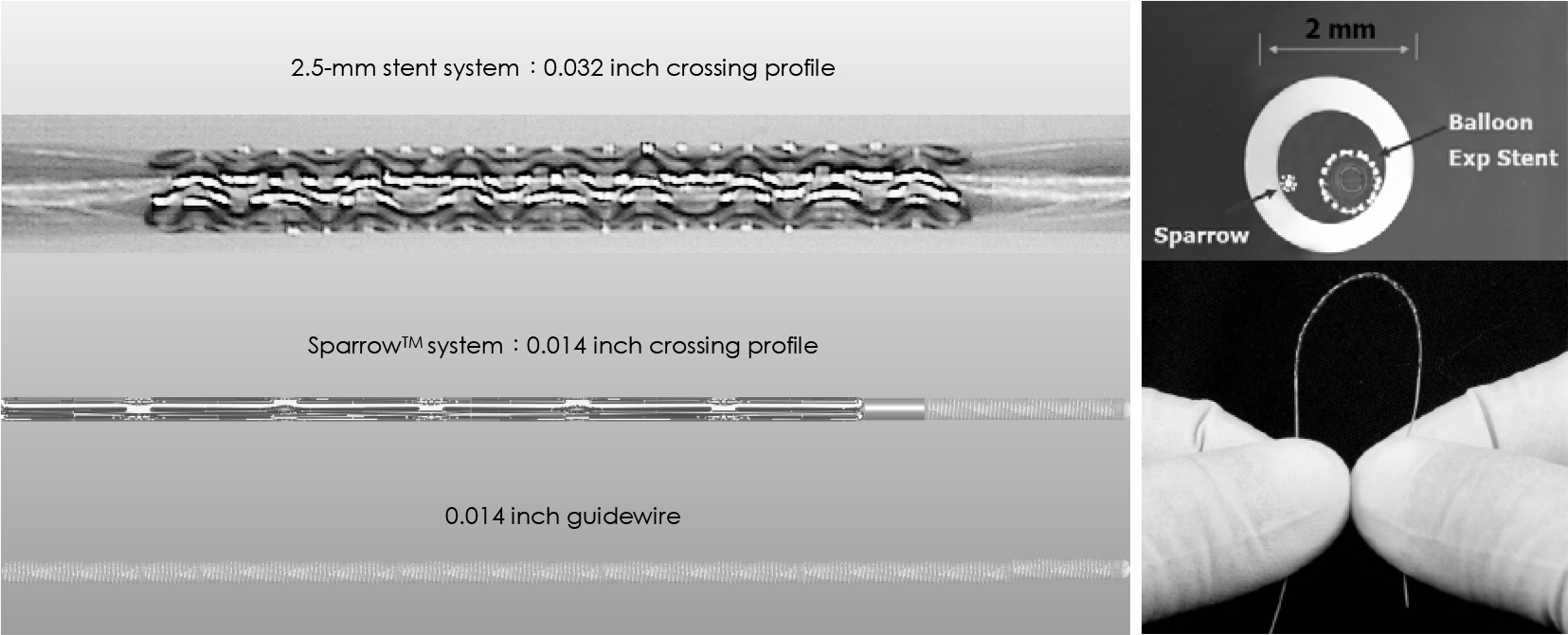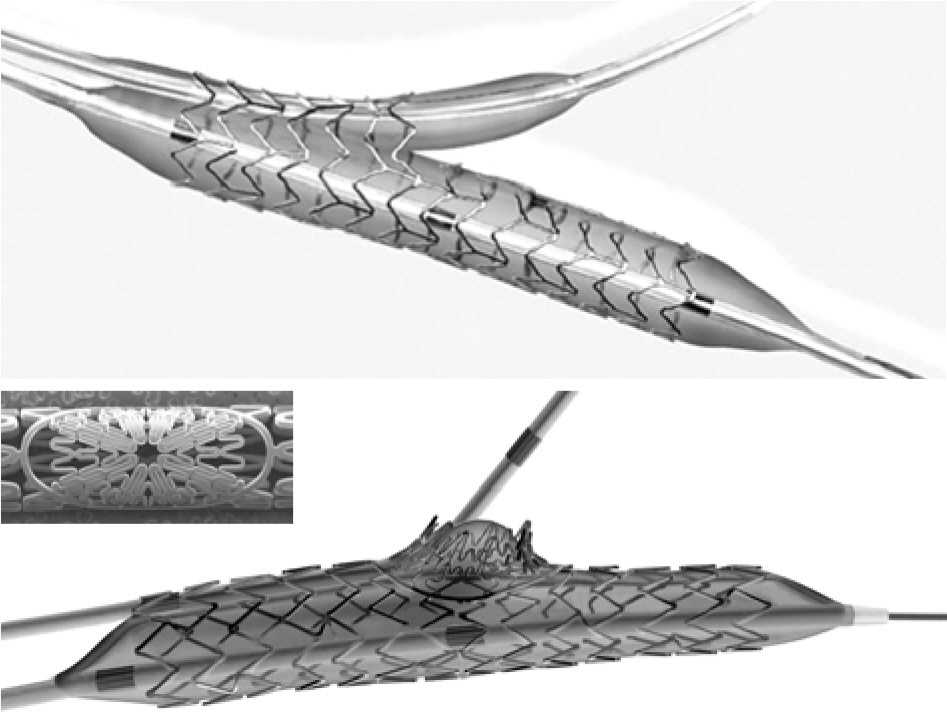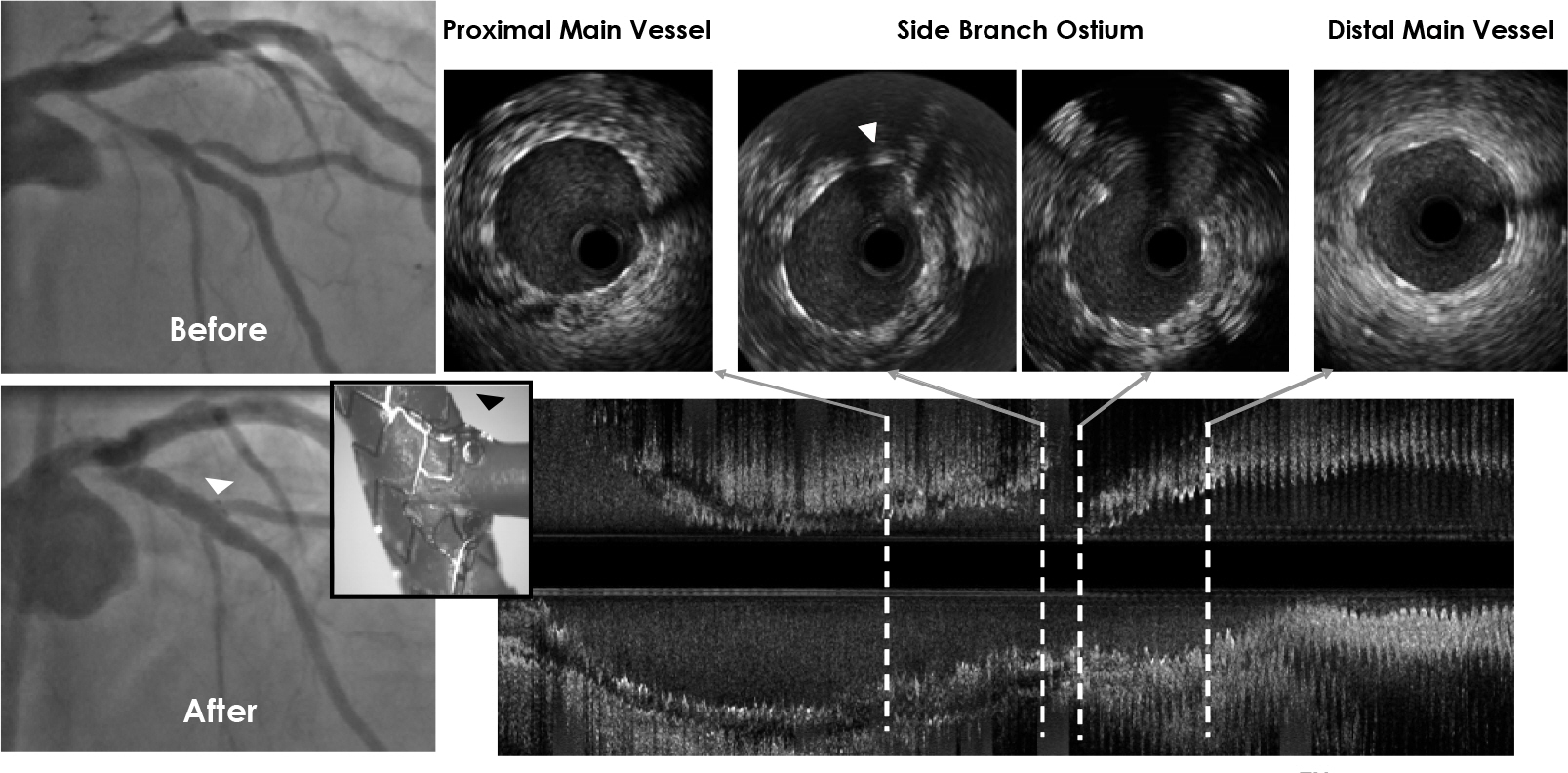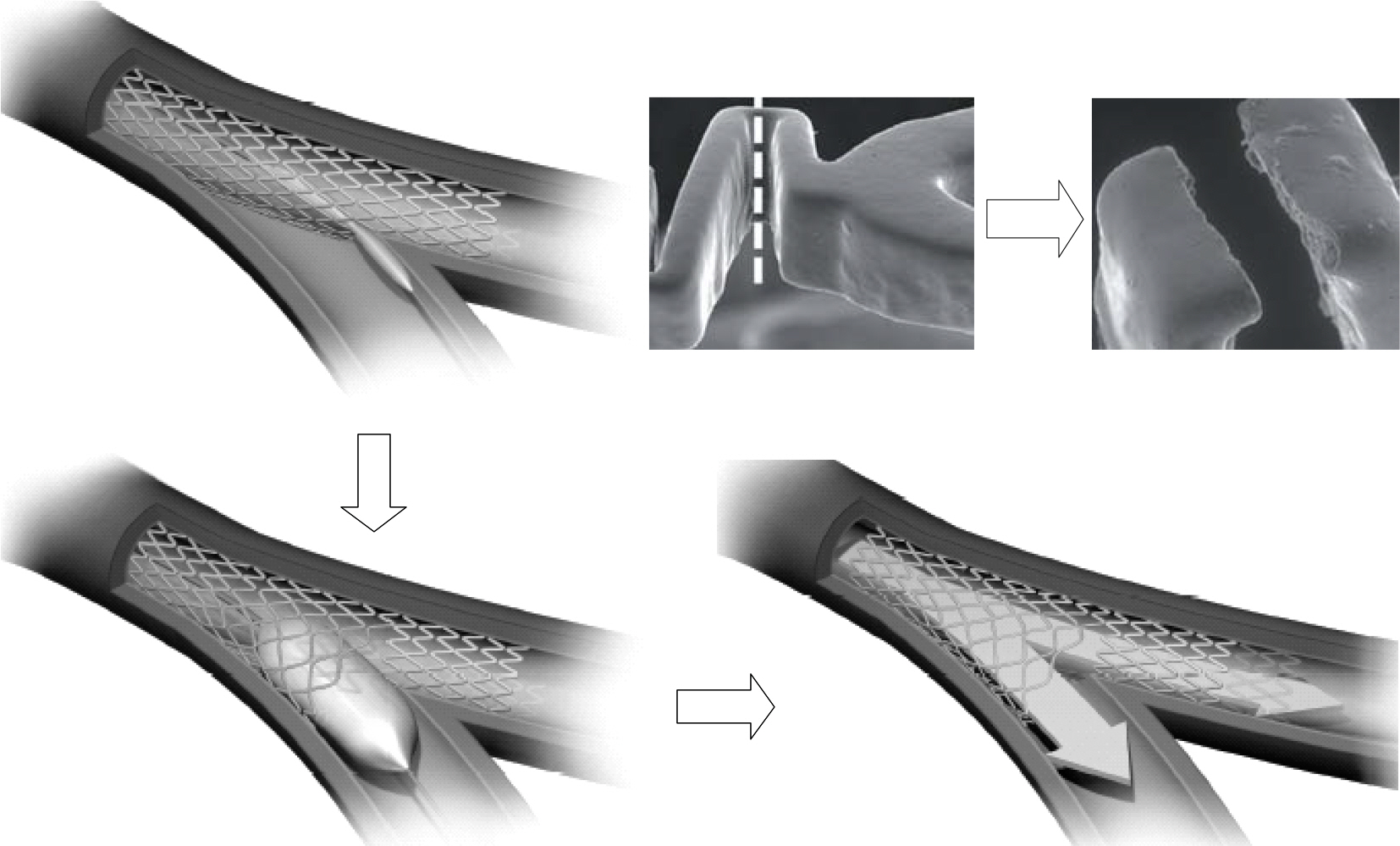Korean Circ J.
2008 Aug;38(8):393-397. 10.4070/kcj.2008.38.8.393.
Novel Coronary Stent Platforms
- Affiliations
-
- 1Department of Internal Medicine, Seoul National University College of Medicine, Cardiovascular Center and Cardiovascular Research Institute, Seoul National University Hospital, Seoul, Korea. bkkoo@snu.ac.kr
- 2Stanford University Medical Center, Stanford, California, USA.
- KMID: 2225757
- DOI: http://doi.org/10.4070/kcj.2008.38.8.393
Abstract
- The stent has been a key part of percutaneous coronary intervention. The advent of drug-eluting stents has further expanded the indication for this technology with a lower overall rate of restenosis. However, the limitations of the current generation stent platforms have become more apparent as more complex are being treated with percutaneous coronary intervention. Coronary stenting sometimes results in a suboptimal outcome for challenging lesion subsets such as tortuous, calcified, bifurcating and multiple and long lesions. In this review, novel stent systems that have been developed to overcome the challenges surrounding current stent designs will be discussed.
Keyword
Figure
Reference
-
References
1. Morice MC, Serruys PW, Sousa JE, et al. A randomized comparison of a sirolimus-eluting stent with a standard stent for coronary revascularization. N Engl J Med. 2002; 346:1773–80.
Article2. Stone GW, Ellis SG, Cox DA, et al. A polymer-based, paclitaxel-eluting stent in patients with coronary artery disease. N Engl J Med. 2004; 350:221–31.
Article3. Seung KB. Drug eluting stent and percutaneous coronary intervention. Korean Circ J. 2003; 33:857–60.
Article4. Park JS, Kim YJ, Shin DG, et al. Clinical and angiographic outcome of sirolimus-eluting stent for the treatment of very long lesions. Korean Circ J. 2006; 36:490–4.
Article5. Lohavanichbutr K, Webb JG, Carere RG, et al. Mechanisms, management, and outcome of failure of delivery of coronary stents. Am J Cardiol. 1999; 83:779–81.
Article6. Ferrer Gracia MC, Moreno R, Perez Vizcayno MJ, et al. Failure in the implantation of drug eluting stents: frequency and related factors. Med Intensiva. 2007; 31:423–7.7. Yamasaki M, Ako J, Honda Y, et al. Novel guidewire-based stent delivery system: examination by intravascular ultrasound. Catheter Cardiovasc Interv. 2008; 72:47–51.8. Evans LW, Doran P, Marco P. XTENT® Custom NXTM drug eluting stent systems. EuroInterv. 2007; 3:158–61.9. Grube E, Sievert H, Hauptmann KE, et al. Novel drug eluting stent system for customised treatment of coronary lesions: CUSTOM I feasibility trial 24 months results. EuroInterv. 2008; 4:71–8.10. Kim W, Kim YJ, Lee WJ, et al. Lesion location: its impacts on the procedural and postprocedural outcomes of unprotected left main coronary stenting. Korean Circ J. 2007; 37:419–24.
Article11. Tanabe K, Hoye A, Lemos PA, et al. Restenosis rates following bifurcation stenting with sirolimus-eluting stents for de novo narrowings. Am J Cardiol. 2004; 94:115–8.
Article12. Lemos PA, Hoye A, Goedhart D, et al. Clinical, angiographic, and procedural predictors of angiographic restenosis after sirolimus-eluting stent implantation in complex patients: an evaluation from the rapamycin-eluting stent evaluated at Rotterdam Cardiology Hospital (RESEARCH) study. Circulation. 2004; 109:1366–70.
Article13. Colombo A, Moses JW, Morice MC, et al. Randomized study to evaluate sirolimus-eluting stents implanted at coronary bifurcation lesions. Circulation. 2004; 109:1244–9.
Article14. Lefevre T, Ormiston J, Guagliumi G, et al. The FRONTIER Stent Registry: safety and feasibility of a novel dedicated stent for the treatment of a bifurcation coronary artery lesions. J Am Coll Cardiol. 2005; 46:592–8.15. Laborde JC, Borenstein N, Behr L, Ramcharitar S. Stentys coronary bifurcation stent. EuroInterv. 2007; 3:162–5.16. Onuma Y, Muller R, Ramcharitar S, et al. Tryton I, First-In-Man (FIM) study: six month clinical and angiographic outcomes, analysis with new quantitative coronary angiography dedicated for bifurcation lesions. EuroInterv. 2008; 3:546–52.17. Grube E, Wijns W, Schofer J, Shmulewitz A, Steckel MG, Leon MB. FIM results of Cappella Sidegruard for treatment of coronary bifurcations. Am J Cardiol. 2007; 100:18L. Abstract.18. Grube E, Buellesfeld L, Neumann FJ, et al. Six-month clinical and angiographic results of a dedicated drug-eluting stent for the treatment of coronary bifurcation narrowings. Am J Cardiol. 2007; 99:1691–7.
Article19. Hasegawa T, Ako J, Miyazawa A, et al. Analysis of left main coronary bifurcation lesions treated with Biolimus-eluting Devax Axxess plus nitinal self-expanding stent: Intravascular ultrasound results of the AXXENT trial. Am J Cardiol. 2007; 100:18L. Abstract.
- Full Text Links
- Actions
-
Cited
- CITED
-
- Close
- Share
- Similar articles
-
- Coronary Stent Fracture in a Patient with an Atrial Septal Defect and Severe Pulmonary Hypertension
- Extraction of a Fully Deployed Coronary Stent during Retrieval of Another Dislodged Stent
- Treatment of Stent Dislodgement Complicated by Coronary Artery Dissection using Parallel Wire Technique and Small Balloon
- Undermining and Ballooning the Proximal Part of the Left Main Coronary Artery Stent Resulting in an Iatrogenic Stent Deformation
- The preventive effects of the heparin-coated coronary stent in a porcine coronary stent restenosis model








